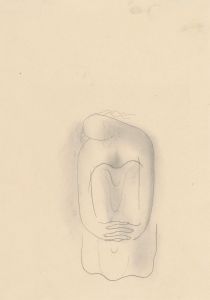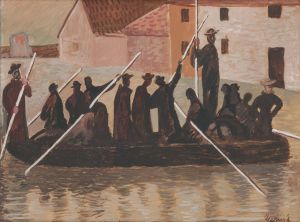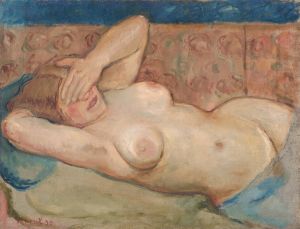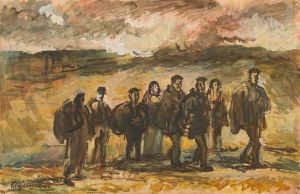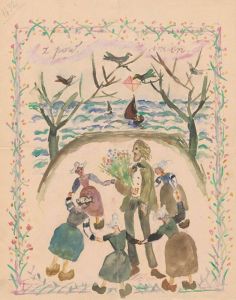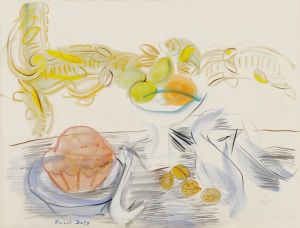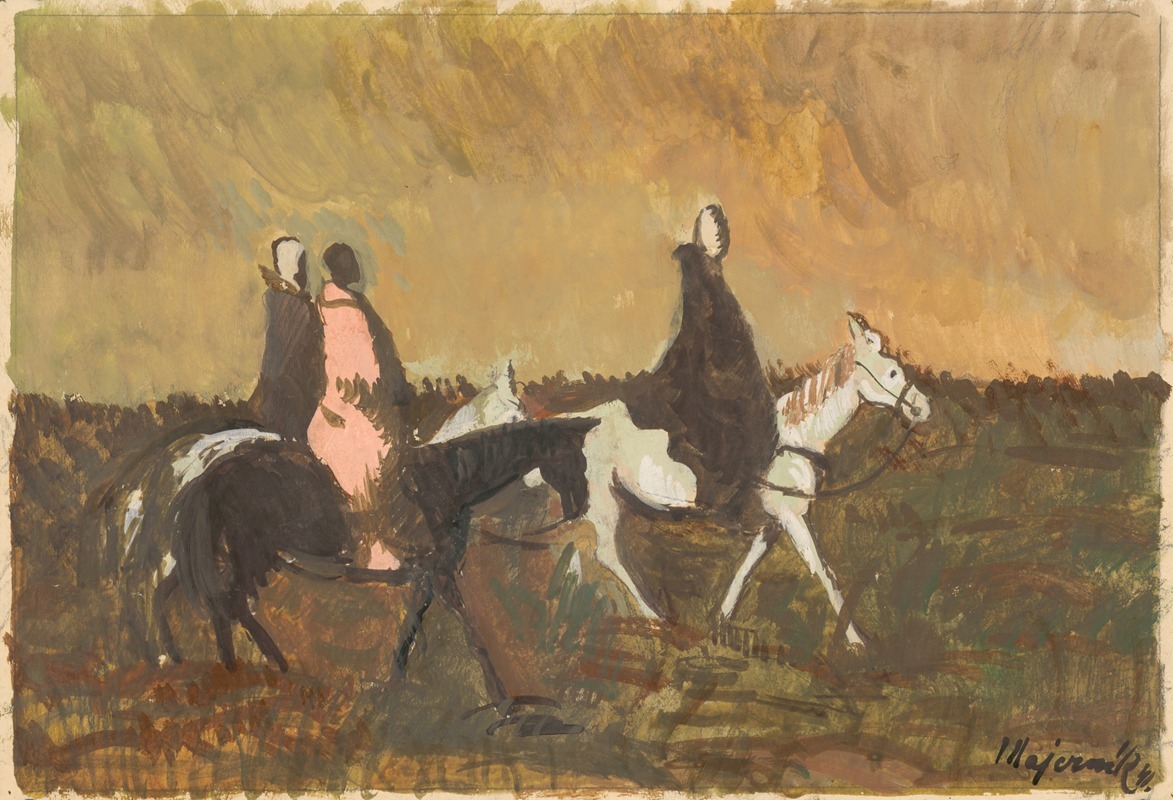
Three Riders
A hand-painted replica of Cyprián Majerník’s masterpiece Three Riders, meticulously crafted by professional artists to capture the true essence of the original. Each piece is created with museum-quality canvas and rare mineral pigments, carefully painted by experienced artists with delicate brushstrokes and rich, layered colors to perfectly recreate the texture of the original artwork. Unlike machine-printed reproductions, this hand-painted version brings the painting to life, infused with the artist’s emotions and skill in every stroke. Whether for personal collection or home decoration, it instantly elevates the artistic atmosphere of any space.
Cyprián Majerník was a Slovak painter born on November 24, 1909, in Veľké Kostoľany, Slovakia, and he passed away on July 4, 1945, in Prague, Czech Republic. He is known for his expressive and often melancholic works that reflect the turbulent times in which he lived, particularly the period surrounding World War II. Majerník's style is characterized by its emotional intensity, dramatic compositions, and a distinct use of color and form.
One of Majerník's notable works is "Three Riders," a painting that exemplifies his unique artistic vision. Created in 1936, "Three Riders" is an oil on canvas that measures 100 x 120 cm. The painting is housed in the Slovak National Gallery in Bratislava, Slovakia.
"Three Riders" depicts three horsemen riding through a desolate landscape. The riders are portrayed with a sense of urgency and determination, which is accentuated by the dynamic composition and the use of bold, sweeping brushstrokes. The background is stark and barren, emphasizing the isolation and the struggle of the figures in the foreground. The horses appear almost spectral, adding to the haunting atmosphere of the scene.
Majerník's choice of subject matter in "Three Riders" can be seen as a reflection of the political and social upheavals of the 1930s. The painting conveys a sense of foreboding and the inevitability of conflict, themes that were prevalent in Europe during this period. The riders can be interpreted as symbols of the human condition, facing an uncertain and challenging future.
The color palette of "Three Riders" is dominated by earthy tones, with shades of brown, gray, and muted greens. This choice of colors enhances the somber mood of the painting and underscores the bleakness of the landscape. The use of light and shadow in the painting further adds to the dramatic effect, highlighting the tension and movement within the composition.
Majerník's technique in "Three Riders" demonstrates his mastery of form and his ability to convey deep emotional resonance through his art. The painting's composition is carefully balanced, with the three riders forming a diagonal line that leads the viewer's eye through the scene. This dynamic arrangement creates a sense of movement and urgency, drawing the viewer into the narrative of the painting.
"Three Riders" is a significant work in Majerník's oeuvre, showcasing his ability to capture the essence of his time and convey powerful emotions through his art. The painting remains an important piece in the Slovak National Gallery's collection, offering insight into the historical and cultural context of the 1930s and the impact of these events on the artist's work.
Cyprián Majerník's legacy as an artist is marked by his poignant and evocative paintings, which continue to resonate with audiences today. "Three Riders" stands as a testament to his skill and his ability to reflect the human experience through his art.








